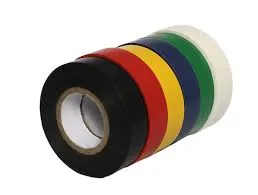The Importance of Floor Marking Tape A Focus on Red
In today’s fast-paced and safety-conscious environment, the use of floor marking tape has become an essential component in various sectors, ranging from industrial warehouses to bustling retail spaces. Among the various colors available, red floor marking tape is particularly significant due to its universal associations with safety and alertness. This guide will delve into the importance, applications, and best practices associated with using red floor marking tape.
Understanding Floor Marking Tape
Floor marking tape is a highly durable adhesive tape designed to create visible markings on the ground. This tape is typically made from materials such as vinyl or PVC, providing excellent resilience against wear and tear. It serves multiple purposes, from defining pathways to indicating hazardous zones, ensuring that both employees and customers are informed and safe in their movements.
The Symbolism of Red
In many cultures and industries, the color red signifies caution, danger, or prohibition. It draws immediate attention and alerts individuals to potential hazards. Whether used in factories, offices, or retail environments, red floor marking tape can help convey important messages about safety and operational procedures.
For instance, red tape is often used to delineate areas that are off-limits or to highlight potential safety hazards such as heavy machinery or areas where caution is necessary due to spills or obstacles. By marking these areas clearly, organizations can significantly reduce the risk of accidents and ensure a safer environment for everyone present.
Applications of Red Floor Marking Tape
1. Industrial Settings In warehouses and factories, red floor marking tape plays a crucial role in delineating dangerous zones, such as around machinery or areas where hazardous materials are stored. Clear markings help workers navigate safely and maintain awareness of their environment.
2. Retail Spaces In retail environments, red tape can guide customers through checkout lines or indicate areas where products are not allowed. It can help in managing foot traffic effectively, contributing to better customer service and satisfaction.
3. Healthcare Facilities Hospitals and clinics often use red tape to mark off areas that require caution, such as spots with medical equipment or areas undergoing maintenance. This ensures that both staff and patients remain aware of their surroundings, ultimately enhancing patient safety.
floor marking tape red

5. Public Spaces In public areas such as schools or gyms, red tape can highlight emergency exits or areas that require caution, helping to educate individuals on safe practices.
Installation and Best Practices
When installing red floor marking tape, certain best practices should be followed to ensure effectiveness
- Surface Preparation The area where the tape will be applied should be clean and dry. Dust, grease, or other contaminants can prevent the tape from adhering properly, which could lead to it peeling off over time.
- Measuring and Planning Before applying the tape, measure the area carefully and plan the layout. This prevents unnecessary cuts and waste, ensuring a clean, professional appearance.
- Application Technique Apply the tape firmly to avoid air bubbles, which can compromise its durability. For best results, consider using a roller to ensure a secure bond between the tape and the floor.
- Regular Maintenance Regularly inspect the tape for wear and tear, replacing sections that may have deteriorated to maintain clear communication of safety messages.
Conclusion
Red floor marking tape is more than just a simple adhesive; it plays a vital role in enhancing safety and organization across various environments. Its ability to signify caution and danger makes it an invaluable tool for preventing accidents and ensuring the well-being of both employees and customers. As industries continue to prioritize safety and efficiency, embracing the use of red floor marking tape is a step forward in safeguarding workplaces and public spaces alike. Whether in a bustling warehouse or a crowded retail store, the clear indicators provided by red tape can lead to informed decisions and actions, ultimately fostering a culture of safety and awareness.
-
XIANGFAN Rubber Tape-Ultimate Solutions for All Your Insulation NeedsNewsJun.24,2025
-
XIANGFAN Rubber Tape-Protection for Industrial and Residential ApplicationsNewsJun.24,2025
-
XIANGFAN Rubber Tape: Superior Safety and Sealing for Demanding EnvironmentsNewsJun.24,2025
-
XIANGFAN Rubber Tape: Reliable Solutions for Every Electrical ChallengeNewsJun.24,2025
-
XIANGFAN Electrical & Industrial Tape: Powering Reliability Across IndustriesNewsJun.24,2025
-
XIANGFAN Electrical & Industrial Tape: Excellence in Every ApplicationNewsJun.24,2025
